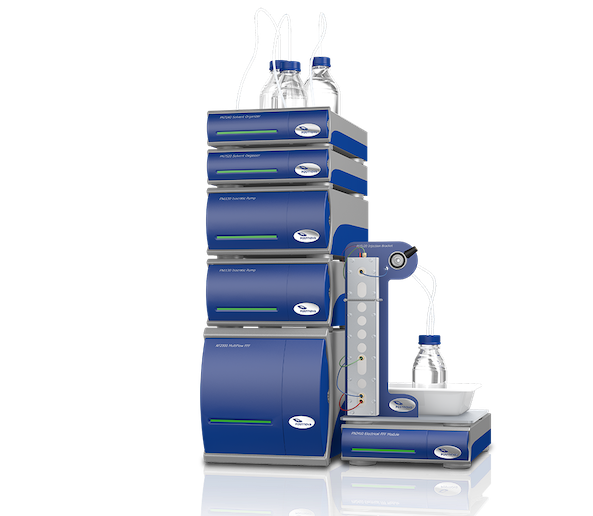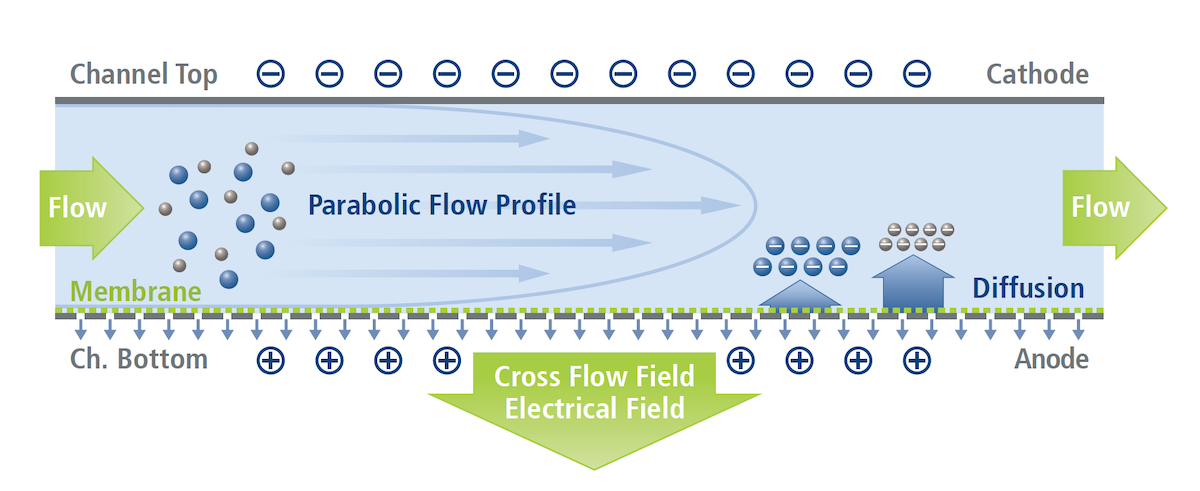Members Login

Channels
Special Offers & Promotions
Separation and Characterization of Nanoplastics in the Environment
Postnova Analytics has published a new application note that demonstrates the promise of Electrical Asymmetric Field Flow Fractionation (EAF4) technology for separation and characterization of nanoplastics in the environment.
 The widespread use of plastics has created one of the worst human-created environmental disasters of current times. Typically formed by the weathering and breakdown of plastic materials, small fragments of plastic smaller than a one micrometre in size (nanoplastics) have been found to be widespread in the environment. Nanoplastics are very difficult to isolate from their environment with simple methods, such as filtration, that can be used for larger size particles. Being sub-micrometre in size, nanoplastic particles can potentially penetrate tissues and therefore pose a significant environmental threat to marine life. However, many questions still need to be answered to establish just how dangerous nanoplastic particles really are, and a reliable method of analysis is a key requirement.
The widespread use of plastics has created one of the worst human-created environmental disasters of current times. Typically formed by the weathering and breakdown of plastic materials, small fragments of plastic smaller than a one micrometre in size (nanoplastics) have been found to be widespread in the environment. Nanoplastics are very difficult to isolate from their environment with simple methods, such as filtration, that can be used for larger size particles. Being sub-micrometre in size, nanoplastic particles can potentially penetrate tissues and therefore pose a significant environmental threat to marine life. However, many questions still need to be answered to establish just how dangerous nanoplastic particles really are, and a reliable method of analysis is a key requirement.
Nanoplastic particles have proven challenging to separate and characterize using traditional techniques such as dynamic light scattering or size exclusion chromatography. By comparison - Asymmetrical Flow Field-Flow Fractionation (AF4) may be the analytical solution for nanoplastics as it is a high-resolution separation technique proven for characterization of both monodisperse and polydisperse nanoparticle suspensions.
The authors of the new application describe how a mixture of two polystyrene particles was used as a test standard for a polydisperse nanoplastics system. This mixture was separated using the AF4 technique with an additional electrical field applied across the separation channel which separates the particles based on their charge polarity and magnitude. By using four different electrical field conditions, measurement of the electrophoretic mobility and thus the individual surface zeta potential of both particles in the mixture was determined. In addition, Multi Angle Light Scattering (MALS) was used as a detector to simultaneously collect information about the size of both particles.
Compared to traditional ‘batch’ analysis, where only a single average size and charge is given, this new Electrical Asymmetric Field Flow Fractionation (EAF4) technique offers great promise as a powerful tool for the accurate characterisation of nanoplastics in the environment.
To request a copy of the application note please contact Postnova Analytics on +49-8191-985-6880 / +44-1885-475007 / +1-801-521-2004.
Principle and Advantages of EAF4
About Postnova Analytics
Founded in 1997, Postnova Analytics is the inventor and leading international supplier of Field-Flow Fractionation (FFF) systems for markets including biopharmaceuticals, polymers, materials, nanotechnology and environmental sciences. Leveraging its unique and patented modular FFF - Light Scattering Platform, Postnova has been able to provide high performance solutions to a wide range of applications. Today the company's growing product portfolio includes Flow FFF, Centrifugal FFF, Thermal FFF, Size Exclusion Chromatography (SEC), MALS and DLS Light Scattering. Postnova is located and headquartered in Landsberg am Lech (Germany) and has subsidiaries in the USA, UK and Finland. These offices, in conjunction with a highly qualified and trained distribution network, provide informed local support to customers worldwide.
View Company Profile and Recent News
Media Partners



